New trail bike: Cannondale Rush
I just returned from the ultimate press junket, where I got to ride and race the 2006 Cannondale Rush. Here’s what I think.
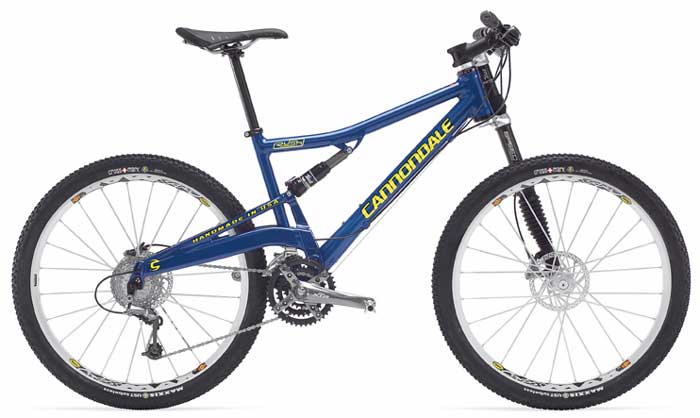 The $5,000 3000 model, with the snazzy Fox Terra Logic TT damping. |
|
|
The Rush is made for endurance racers and other long-distance trail masochists. It has four inches of front and rear suspension — pretty standard for a light-duty trail or rough-course XC race bike — and a very all-mountainish 69-degree head angle (most XC bikes are in the 70-degree range). This combination makes for a light, tight ride that feels stable at speed and lets you just sort of hang on during that last bleary loop.
Although Cannondale’s engineers started from the ground up — this is neither a scaled-up Scalpel nor a toned-down Prophet — the Rush finds itself somewhere between the XC racer and the all-mountain master. What that means depends on your perspective: XC honch Tinker Juarez has been racing the ultra-short-travel Scalpel, and he likes the Rush because it’s plusher than his Scalpel yet still feels quick. Doug Dalton, Cannondale’s test engineer and DH whiz, likes the Rush because it’s quicker than his Prophet yet is burly enough for aggressive trail riding. So the Rush fills the middle ground: light yet stable, quick yet solid.
The Rush’s development team tried all sorts of designs, including a virtual pivot point with some very swoopy stays, but they came back to the familiar single pivot positioned in front of the middle ring. According to the crew, this simple design best balances the requirements of pedaling efficiency, braking neutrality, bump responsiveness and low weight. The Rush comes in a full range of price points and component specs. Whether you spend $5,500 or $1,250 you get the same frame.
I spent 10 hours on this bike, and here’s one impression per hour:
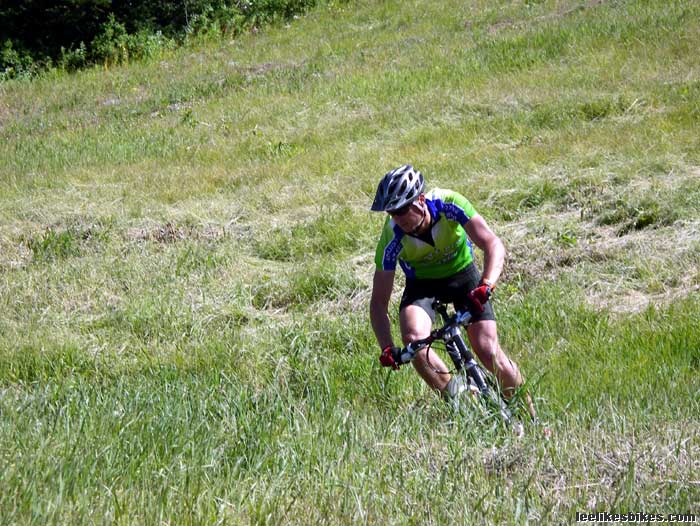 Isaac leans into a well-hidden switchback. |
1. The bike causes pain. It makes you wake up before dawn and climb huge hills all day long. Not only that, it makes you thirsty and tired. And it gives you sunburn. And saddle sores.
2. The bike feels light. My 3000 model weighs around 25 pounds, which is about right for this sort of ride and much lighter than the burly all-mountain bikes I usually ride.
3. The bike pedals well. In the middle ring the suspension behaves neutrally and the bike goes like a champ. In the small ring the chain pulls the swingarm down and forces the rear tire into the ground. On smooth trail this creates a ton of traction. On rough trail (roots, washboard, etc.) the chain yanks the cranks and interferes with your pedal stroke. Solutions: A. Man up and stay in the middle ring, B. Look for smooth lines, or C. Apply smooth pressure on the pedals to keep the suspension open. The harder you charge, the less you notice the pedal feedback.
(Speaking of chain growth, the Rush’s growth from top-out to bottom-out is 17 mm. That’s about twice the growth on a Maverick ML8 and less than half the growth on a Santa Cruz Bullit, which runs its pivot in line with the big ring.)
4. The bike sucks up bumps. The pivot position provides an up-and-back wheel path, which might like to yank chain but responds to bumps very well. While suspension designs with vertical or forward axle paths have a tendency to hang up rocks, the Rush skates right over them. It’s not DH-bike plush, but those four inches definitely get used.
|
|
5. The bike feels quick. When you snap the pedals to clear an uphill log or somesuch, the Rush really takes off. In the middle ring the response feels immediate. In the small ring you open the suspension a bit then the tire grabs. BRAAAP!
6. The fork on the 3000 and Team Replica models would be sweet for racing. The Lefty Speed FOX Terra Logic TT fork contains an inertia valve that locks the suspension until a bump opens the main valve. You can tune this fork to completely eliminate pedal bob yet react to bumps. With the threshold set high the fork deflects off small bumps and skitters through turns. It feels most plush and hooks up best with the threshold very low.
7. The fork on the lower models is better for general riding. On my second race loop I ran the Lefty Speed with DLR2 damping and a lockout lever, and I must say I like its consistent responsiveness. The fork absorbs bumps, tracks well and holds the front wheel onto the bike — everything you need in a fork.
8. The frame flexes. The Cannondale engineers say they intentionally engineered flex into the frame so it hooks up better in corners and dampens hard bottom-outs. At speed over irregular surfaces, the bike does indeed rail. Climbing a rocky or rooted climb, I felt and saw the one-piece bottom bracket/pivot sway away from my power leg and tweak the rear end. I can’t say this slowed me down (that was the job of my fat ass). It’s just something I noticed.
9. After 10 hours I still can’t shift the Dual Control levers with Rapid Rise. No matter what I try — push the lever down to go down the cogset, down to put the hammer down, down to go downhill, whatever — I shifted the wrong direction at least half the time.
10. This is a great bike to ride when you’re far from home and hurting. It covers ground efficiently and handles predictably. If you’re an out-of-shape downhiller you won’t win any endurance raes, but you’ll survive them.
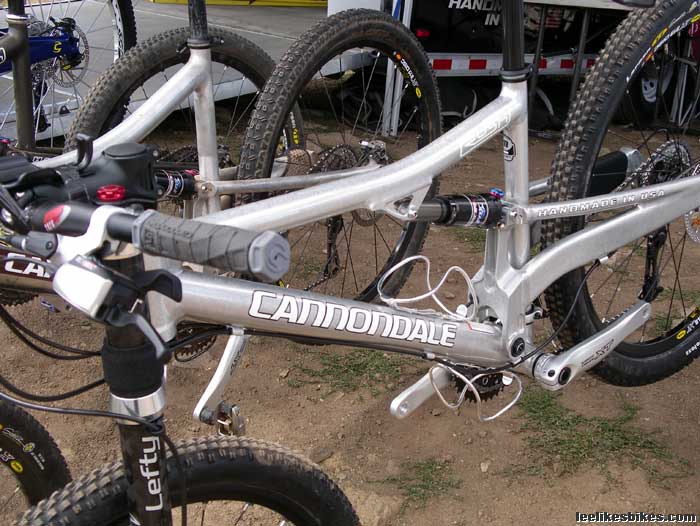 |
More details and less frivolity in the December 2005 issue of Mountain Biking magazine. Check it out.
If you have a product to review, email me.


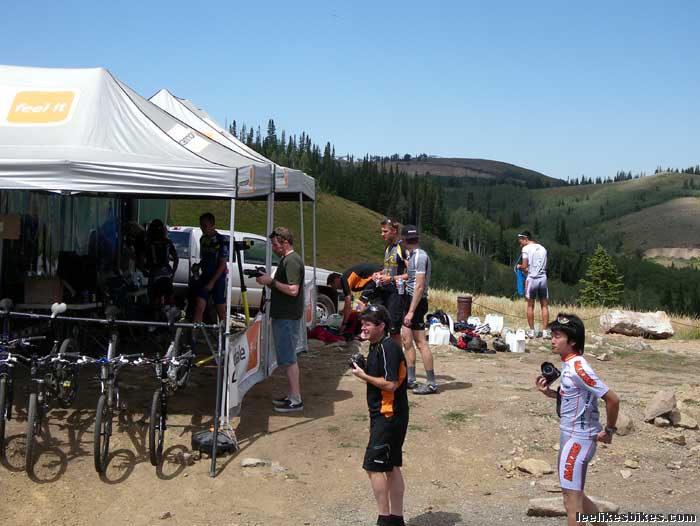
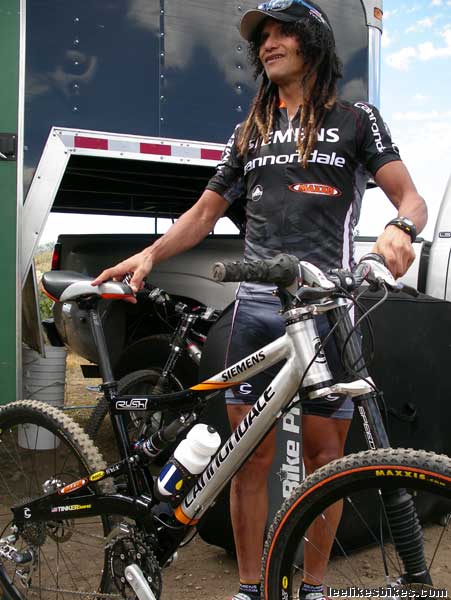
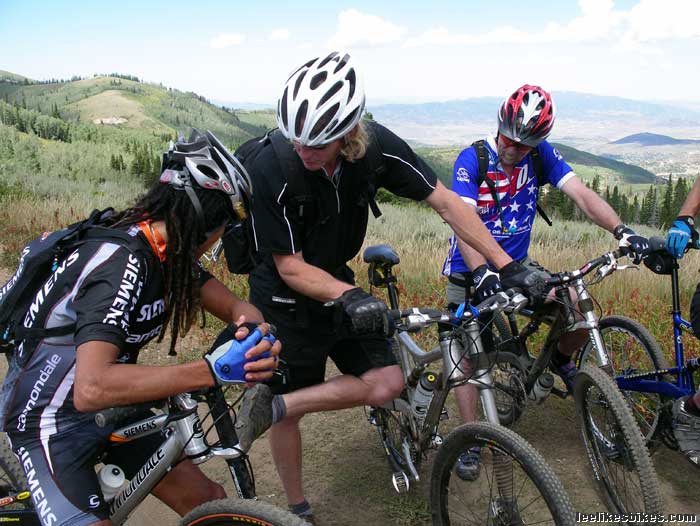
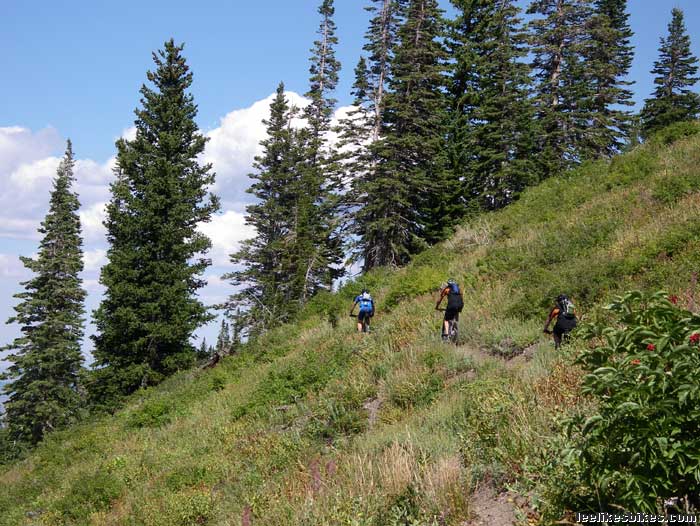
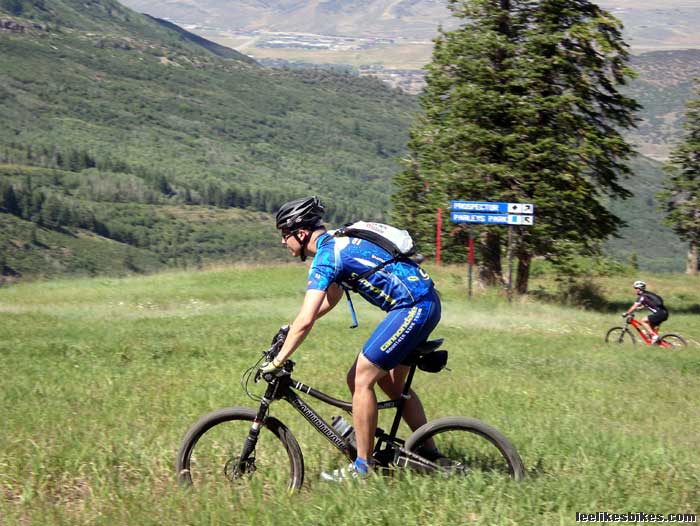
Comments are closed.